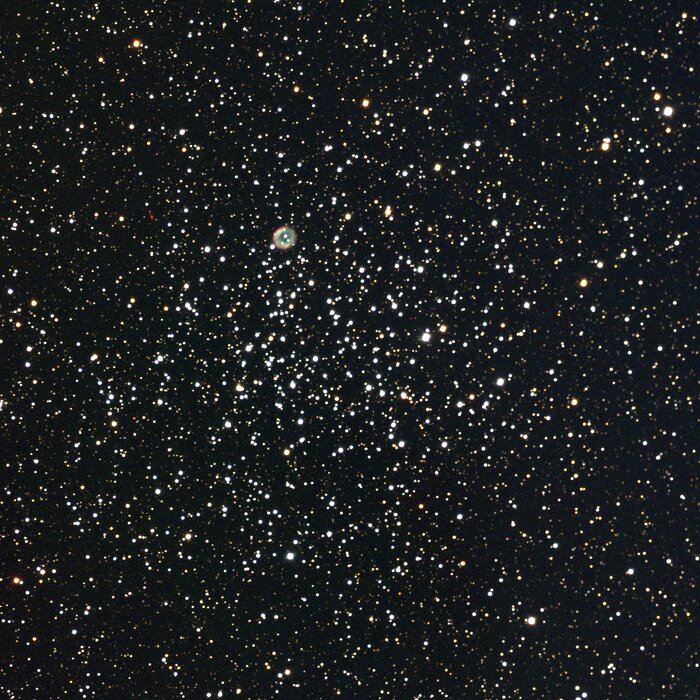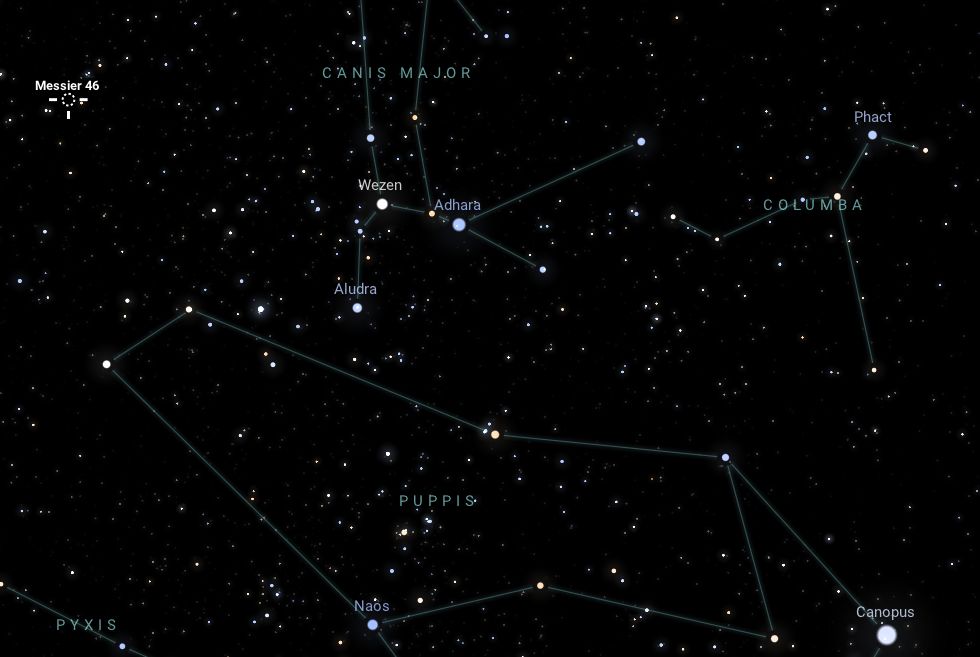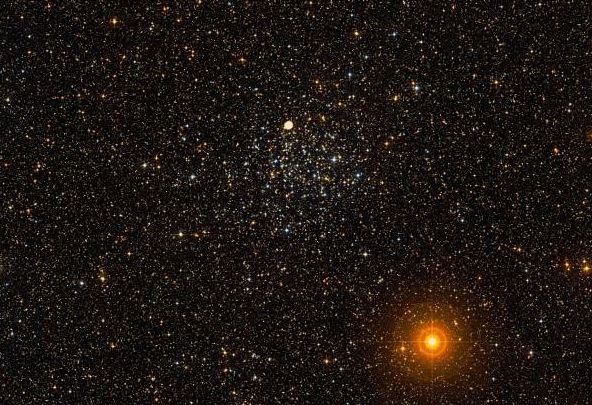Messier 46 (M46) is a fascinating open star cluster located in the constellation Puppis, a segment of the now-divided ancient constellation Argo Navis. Discovered by Charles Messier in 1771, M46 is renowned for its dense population of stars and its captivating visual appearance. Puppis itself lies near the celestial equator, making M46 an accessible target for observers in both hemispheres, although the cluster’s visibility and prominence vary depending on the observer’s location.
Physical Characteristics
M46 lies approximately 5,400 light-years away from Earth and spans a diameter of about 30 light-years, making it one of the richest and most compact open clusters in the Messier catalogue. This cluster is estimated to contain several hundred stars, the majority of which are hot blue and white stars, characteristic of its relatively young age of around 300 million years. Alongside these dominant blue stars, a smattering of yellow and red stars adds to its visual appeal.
The stars within M46 are bound together by their mutual gravitational attraction, but the cluster’s eventual fate will involve dispersal, as gravitational interactions with the Milky Way’s disk slowly pull its stars apart. For now, however, it remains a vivid showcase of stellar formation and evolution.
Planetary Nebula NGC 2438
Adding to M46’s allure is the planetary nebula NGC 2438, which appears superimposed over the cluster. Despite its apparent proximity, NGC 2438 is not physically associated with M46. The nebula is a foreground object, estimated to lie at a similar distance of approximately 5,400 light-years from Earth but moving at a different velocity. NGC 2438 represents the final stages of a star’s life, where a red giant has shed its outer layers to form a glowing shell of ionized gas surrounding its hot, dense core. This juxtaposition of a young open cluster and an aged planetary nebula offers a rare chance to study diverse stellar processes in one field of view.

Visual Appearance
M46 has an apparent size of approximately 27 arc minutes across. This makes it nearly the same angular size as the full Moon when viewed from Earth.
With an apparent magnitude of 6.1, M46 is faintly visible under excellent conditions to the naked eye but comes alive when viewed through optical instruments. Binoculars reveal a bright, concentrated smudge, while telescopes bring the cluster’s hundreds of stars into sharp focus, along with the distinctive circular glow of NGC 2438. The stars of M46, set against the Milky Way’s dense star fields, create a striking visual contrast. Observers often describe M46 as one of the most rewarding star clusters due to its richness and the unique presence of the planetary nebula.
Observation Tips
M46 is ideally viewed using a small to medium telescope under dark skies, although binoculars can suffice for casual observation. To maximize the experience, seek a location far from urban light pollution and avoid nights with significant moonlight. The cluster’s location near the celestial equator makes it visible from a broad range of latitudes, but viewing conditions differ between hemispheres.
In the Northern Hemisphere, M46 is best observed from late fall through early spring, with peak visibility in January and February. During this time, Puppis rises sufficiently above the southern horizon for clear views. However, higher northern latitudes may struggle with M46’s low altitude, which can place the cluster close to the horizon where atmospheric distortion becomes an issue.

In the Southern Hemisphere, M46 enjoys greater prominence, appearing high in the sky during the summer months from December to March. January offers the best conditions, as Puppis reaches its zenith during this time, placing M46 almost overhead in dark skies. These conditions not only make the cluster easier to spot but also allow for better resolution of its individual stars and NGC 2438’s nebulous glow.
Both novice and experienced astronomers will find M46 a rewarding target. Its rich star population, combined with the nearby planetary nebula, offers a unique blend of youthful stellar exuberance and the serene beauty of a dying star, providing a profound glimpse into the cyclical nature of the cosmos.



